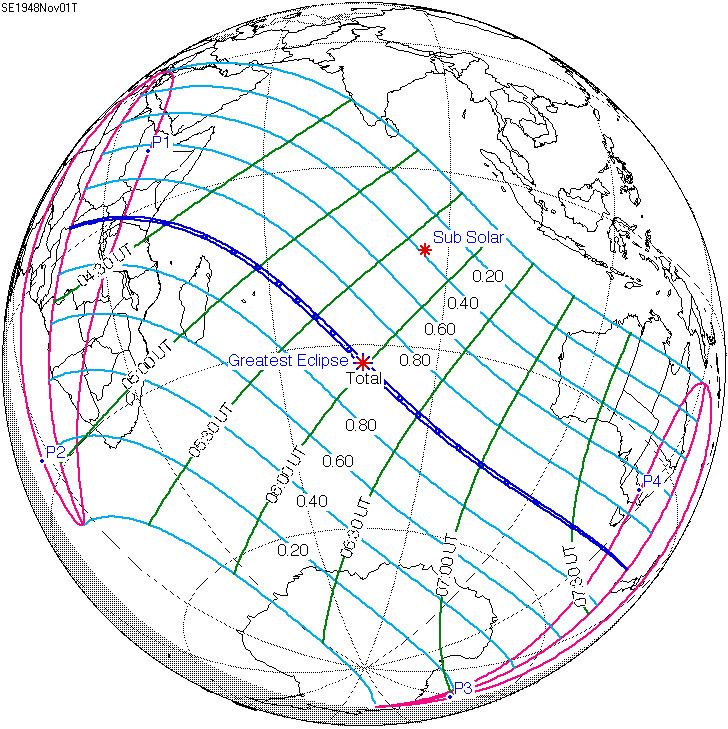Nature Total Magnitude 1.0231 Max. width of band 84 km (52 mi) Start date November 1, 1948 | Gamma -0.3517 Duration 116 sec (1 m 56 s) Greatest eclipse 5:59:18 | |
 | ||
A total solar eclipse occurred on November 1, 1948. A solar eclipse occurs when the Moon passes between Earth and the Sun, thereby totally or partly obscuring the image of the Sun for a viewer on Earth. A total solar eclipse occurs when the Moon's apparent diameter is larger than the Sun's, blocking all direct sunlight, turning day into darkness. Totality occurs in a narrow path across Earth's surface, with the partial solar eclipse visible over a surrounding region thousands of kilometres wide. During this eclipse, comet C/1948 V1, also known as the Eclipse Comet of 1948, was discovered shining near the sun.
Contents
Solar eclipses 1946-1949
Each member in a semester series of solar eclipses repeats approximately every 177 days and 4 hours (a semester) at alternating nodes of the Moon's orbit.
Saros series 142
It is a part of Saros cycle 142, repeating every 18 years, 11 days, containing 72 events. The series started with partial solar eclipse on April 17, 1624. It contains one hybrid eclipse on July 14, 1768, and total eclipses from July 25, 1786 through October 29, 2543. The series ends at member 72 as a partial eclipse on June 5, 2904. The longest duration of totality will be 6 minutes, 34 seconds on May 28, 2291.
